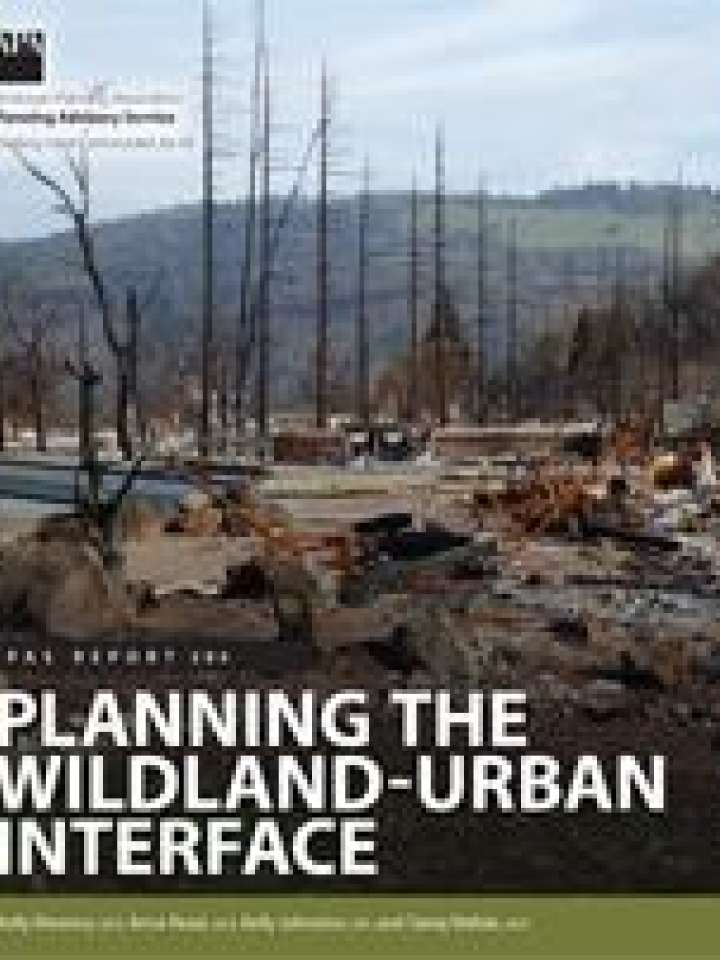Planning the wildland-urban interface
Fire is a natural part of wildland ecosystems, helping to maintain forest health, control invasive species, and provide wildlife habitat. But in recent years the costs of wildfire to our communities have far outweighed the benefits — and wildfires keep getting bigger, more destructive, and more deadly.
Today, more than one-third of the U.S. population lives in the wildland-urban interface (WUI) — those areas where development mixes with undeveloped wildlands. The attraction of country living and closeness to nature is accelerating growth in the WUI. However, when wildfires strike, the WUI’s mix of buildings with forests and grasslands sets the stage for disaster.
A key issue — and one that planners can influence — is where and how we build our homes. The land-use decisions that planners shape can help build communities that are safer and more resilient to wildfire.
PAS Report 594, Planning the Wildland-Urban Interface, offers planners an in-depth introduction to the WUI and wildfire basics, covering challenges, trends, and historical context along with the latest wildfire science. It then moves to solutions, providing a holistic planning framework and practical guidance on how to address WUI and wildfire challenges in plans, policies, and regulations. And it highlights opportunities for collaboration with fire departments, federal and state agencies, and other key stakeholders. Case study examples show how communities across the country are already planning for the WUI.
Explore further
